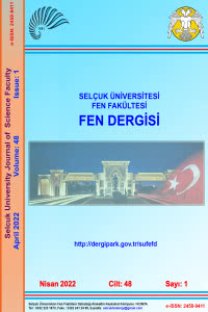AGREGALARIN FİZİKSEL ÖZELLİKLERİNDEN YOLA ÇIKILARAK BETON DAYANIMLARININ YAPAY SİNİR AĞLARI İLE KESTİRİLMESİ
Prediction of Concrete Strength With Artificial Neural Networks By Using Physical Properties of Aggregates
___
- Alexander, M.G., Milne, T.I.,1995, ''Influence of Cement Blend and Aggregate Type on Stress- Strain Behavior and Elastic Modulus of Concrete'', ACI Materials Journal, Vol. 92, May-June. pp. 227- 235.
- Bryson, A.E., Ho Y.C. 1969, '' Applied Optimal Control'', Blaisdell, New York.
- Hong-Guang, N., Ji-Zong, W. 2000, ''Prediction of Compressive Strength of Concrete by Neural Networks'', Cement and Concrete Research, Vol. 30(8), pp. 1245-1250.
- Kaplan, M.F., 1959, ''Flexuraland Compressive Strength of Concrete as Affected by the Properties of Coarse Aggregates'', Journal of American Concrete Institute, May, Vol. 72, pp. 1193- 1208.
- Kawakami H., 1992. ''Effect of Aggregate Type on the Mechanical Properties of Concrete'', Interfacesin Cementitious Composites, J.C.Masa (Ed) Touluuse, pp. 179-186.
- Lai, S., Sera, M., 1997, ''Concrete Strength Prediction by Mean of Neural Networks'', Construction and Building Metarials, Vol. 11(2), pp. 93-98.
- Mukherjee, A., Biswas, S.N., 1997, ''Artificial Neural Networks in Prediction of Mechanical Behavior of Concrete at High Temperature'', Nuclear Engineering and Design, Vol. 178(1), pp. 1-11.
- Murdock, L.J., Brook, K.M., Dewar, J.D., 1991, ''Concrete and Materials and Practice'', 6, London.
- Neville, A.M., 1996, ''Properties of Concerete'', Fourth and Final Edition, John Willey, G. Sons.pp.56-80.
- Öztaş, A.,Pala. M., Özbay, E., Kanca, E., Çağlar, N., Asghar, B. M., 2006, ''Predicting the Compressive Strength and Slump of High Strength Concrete Using Neural Networks'', Construction and Building Metarials, Vol. 20(9), pp. 769-775.
- Tasong, W.A., Lynsdale, C.J., 1998, ''Aggregate Cement Paste Interface II: Influence of Aggregate Physical Properties'', Cement and Concrete Research, Vol. 28, pp. 1453-1465.
- Yeginbogalı, A., 1999, ''Betonun iç yapısı'', Türkiye Çimento Müstahsilleri Birliği Notları, No:3 Ankara.
- ISSN: 2147-9364
- Yayın Aralığı: 2
- Başlangıç: 2013
- Yayıncı: Selçuk Üniversitesi Mühendislik Fakültesi
ÇOKLU REGRESYON METODUYLA ELEKTRİK TÜKETİM TALEBİNİ ETKİLEYEN FAKTÖRLERİN İNCELENMESİ
Havva TUTAR KAHRAMAN, SERPİL EDEBALİ
LEACHING OF ZINC AND MANGANESE FROM SPENT ZINC-CARBON BATTERIES IN ACETIC ACID SOLUTION
HASAN ALİ TANER, TEVFİK AĞAÇAYAK, ALİ ARAS
ÇOK ÖLÇÜTLÜ KARAR VERME YÖNTEMİ VE HEDEF PROGRAMLAMA TEKNİKLERİ İLE TEDARİKÇİ SEÇİMİ
Emir Hüseyin Özder, TAMER EREN
COMPARISION OF INTERNATIONAL CODES FOR STEEL ANCHORS DETAILS USING IN SEISMIC STRENTHENING
MUSA HAKAN ARSLAN, Mohamud Abdirahman IBRAHIM
